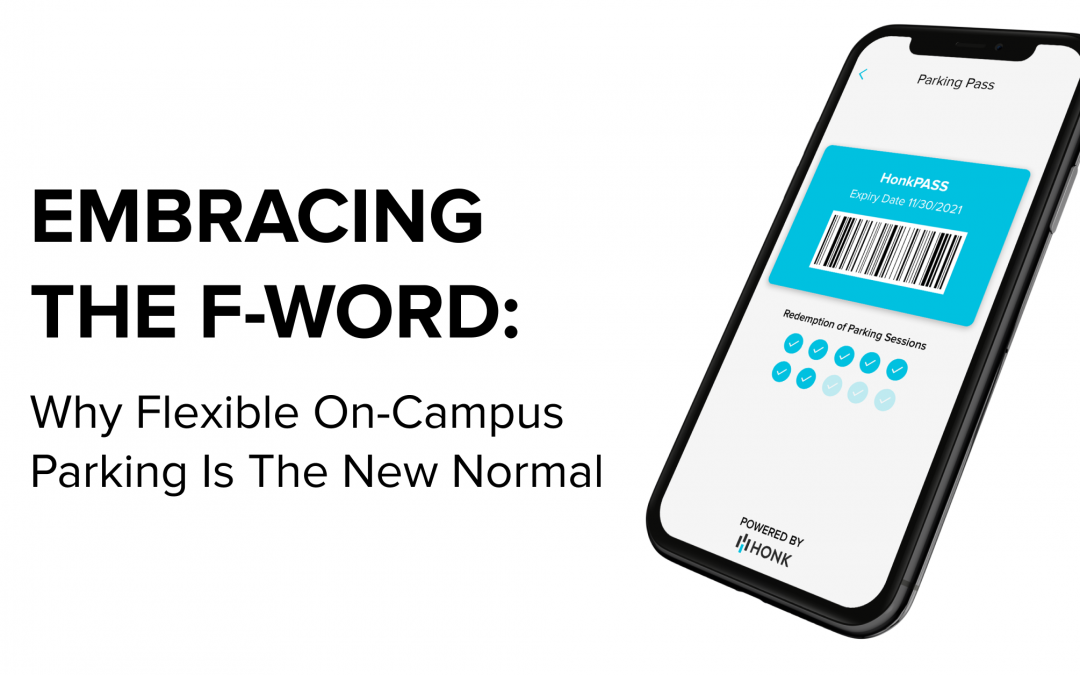To meet the parking needs of today’s students, post-secondary institutions need to move quickly and embrace the f-word on campus: flexibility. With far fewer students learning in the classroom, plus a new wave of semi-frequent parkers in town, flexible parking options have never been so important to the bottom line.
But what exactly does ‘flexible parking’ mean? And what sort of parking options are appealing to this new market of campus parkers? First things first: Adding a flexible parking program to any campus is a need-to-have for both students and faculty alike.
Up until COVID-19 reared its ugly and catastrophic head, parking at colleges and universities was fairly straight forward — with hourly or daily parking made available to the transient parker, and permit parking for those who come to campus regularly. These days, those who are still coming to campus are doing so on a hybrid model, and neither parking option is suitable.
Students — especially in today’s economic environment — are extremely budget-conscious. Daily (and even hourly) parking rates no longer make financial sense for them, and monthly or semester parking even less so considering they’re on campus a fraction of the time they were pre-COVID. To meet the needs of the new, post-COVID student driver, there needs to be a flexible hybrid between hourly/daily parking and monthly/semester permits. According to the IPMI Roadmap to Recovery: University Planning, Strategies & Benchmarking for 2021, 53% of schools implemented flexible permit options in fall 2020, and 11% plan on implementing flexible permitting for the first time in spring 2021.
But the need for embracing flexibility doesn’t stop there. New parking options need to be both flexible and agile when it comes to how parkers pay for their spot. In today’s health and safety-conscious world, contactless payment options are a must. We’ll say it again for the people at the back: Digital touch-free payment options are no longer a nice-to-have, but an absolute need-to-have.
Okay, so what next? Forward-thinking parking operations will need to commit to a variety of payment options, and offer a selection of new parking products in order to offer the end consumer flexibility to use the payment method and choose the product that’s right for them. With all this choice, we predict that parking ‘a la carte’ is the way of the future.
But where does this leave parking services during these fluid, uncertain times? Nobody knows when classes will go back to their ‘regular’ full-time programming, making it hard to plan for the next quarter, month, or even week. But with flexible back-end solutions, parking operators can quickly and easily adapt to ever-changing circumstances and shifting consumer needs.
So what is this flexible back-end solution, and where can you get it? Introducing HonkPASS, a flexible parking pass that fills a gap — let’s call it a pothole — for this new wave of semi-frequent parkers. Consisting of a prepaid package of electronic parking credits, HonkPASS can be redeemed for parking at a single location, or within a group of locations during a specified period of time (think: 10 days in a calendar month). Our team built HonkPASS with both the end customer and operator in mind — to provide flexibility and savings for both. Woo hoo!
But that’s not all… There are so many tangible benefits to adding this new technology to your suite of parking products. With HonkPASS, you can:
-
Increase sales and generate upfront revenue
-
Provide customers with a safe, clean, contactless way to pay
-
Drive uptake with increased compliance, flexibility, and convenience
-
Save on resource & labor costs associated with manual permitting
Want to learn more about HonkPASS as a flexible parking option for your campus? Simply click on the link below to schedule a 30-minute demo with a member of our team. It’s free!

